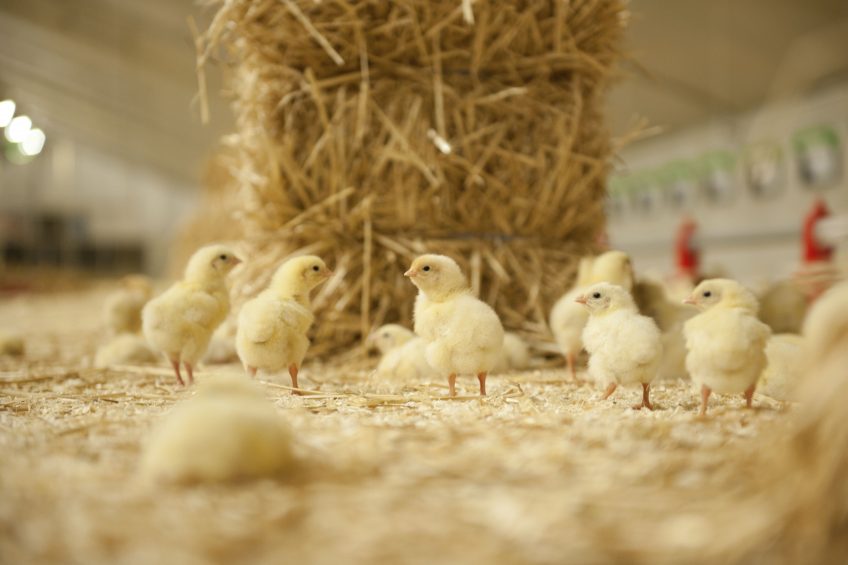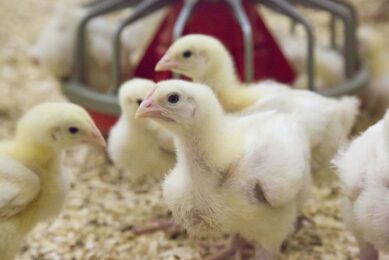H20, bird health and your bottom line

Water is one of the oft-forgotten nutrients in poultry production. A nutrient that is hiding in plain sight, water is concealed under the cover of water lines and nipple drinkers, so it is not given too much thought. However, not thinking about the water flowing in your barn can be harmful to bird health and, ultimately, your bottom line.
Water is one of the oft-forgotten nutrients in poultry production. A nutrient that is hiding in plain sight, water is concealed under the cover of water lines and nipple drinkers, so it is not given too much thought. However, not thinking about the water flowing in your barn can be harmful to bird health and, ultimately, your bottom line.
Layers and broilers consume close to twice the amount of water as feed, so attention to water quality and access to water should be in every poultry producer’s standard operating procedure. There are a couple of factors to be aware of when thinking about water, including:

Avoid biofilms
Once biofilms are established in the water lines, whether or not they can be seen, the water lines are almost 101,000 times harder to clean and get rid of bacteria. If bacteria are caught in the biofilm, they become inaccessible to the cleaners and can break off and reach the birds.
It is important to properly and effectively clean the water lines between flocks. Using an effective sanitisation programme and flushing the lines will help to break up and remove the biofilm. This cleaning step may have to be repeated when the flock leaves the barn and again before the next flock comes in. Always be sure to flush and run fresh water through the water lines just before the new flock arrives in order to avoid any leftover cleaners in the water. Leftover cleaner can negatively impact the birds.
Clean the water lines while the flock is in the barn. While it is more difficult to clean and sanitise the water lines while the flock is in the barn, this is an important step to avoid the build-up of biofilms. Remember, a single E. coli organism can multiply into 24 trillion organisms in 24 hours at a temperature of 32°Celsius (similar to brooding temperatures). As a result, you have to choose an effective, yet mild sanitiser. The sanitiser must be used under proper conditions to work effectively. For example, chlorine requires an acidic pH of around 5-6.5 and a free chlorine level of 2 – 5 ppm to be effective.

Is the equipment working?
It is important to check if the equipment is free from biofilms on the outside and that the equipment is working. The uneven height of a water line, due to something as simple as a stretch in one of the cords holding the water line up, can cause air blockage and prevent birds from accessing water.
On the other hand, simple wear and tear on the drinkers or scale/rust build-up can cause leaky nipple drinkers. Leaky nipple drinkers can mean that water is getting everywhere except the bird’s mouth and can cause wet litter that may negatively impact performance.

Access to water
It is critical to ensure the stocking density of the barn allows all birds access to feed and water. Some producers may even choose to use additional waterers during brooding. The height of the water line is another critical point in guaranteeing that all birds have access to water. A water line height appropriate for the size of the birds will encourage them to drink and, ultimately, help with health and performance.
Many additives can be added through water, such as minerals, vitamins, antibiotics, flavours, acidifiers, vaccines, etc. Whenever using any of these additives, it is important that the water is free of anything that could interfere with the success of the additives and that the water line is flushed after the additives are used. When done correctly, the water can be used as an effective method to deliver additives to birds, especially during times of heat stress.
Acid-Pak 4-Way 2X is an Alltech technology that can be added to the water and is used to maintain optimum conditions for digestion in the stomach and the small intestine. This technology helps to:
- Optimise pH levels,
- Support digestion,
- Maintain water balance.
Water is an important nutrient and can be used to help promote poultry immune status, gut health and performance. Let’s not forget about the water!
Author: Justin Ellis, Alltech






